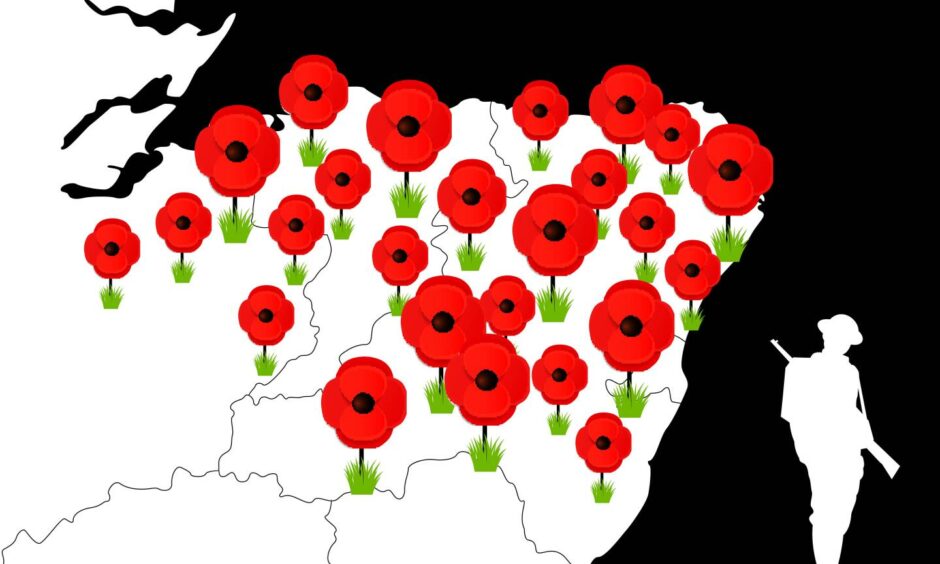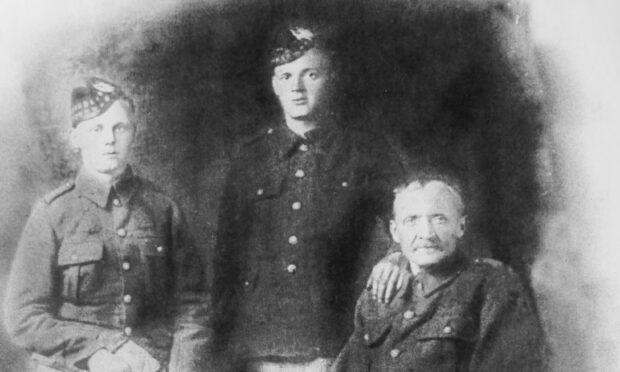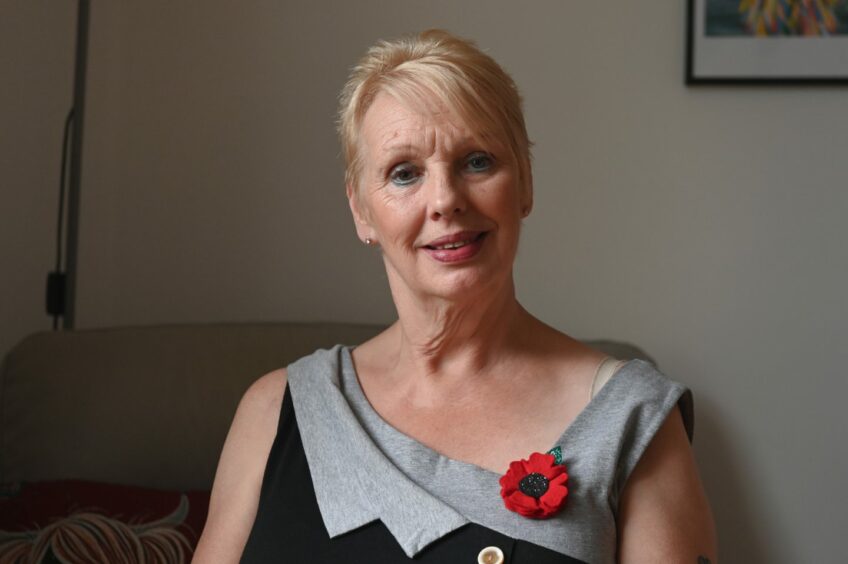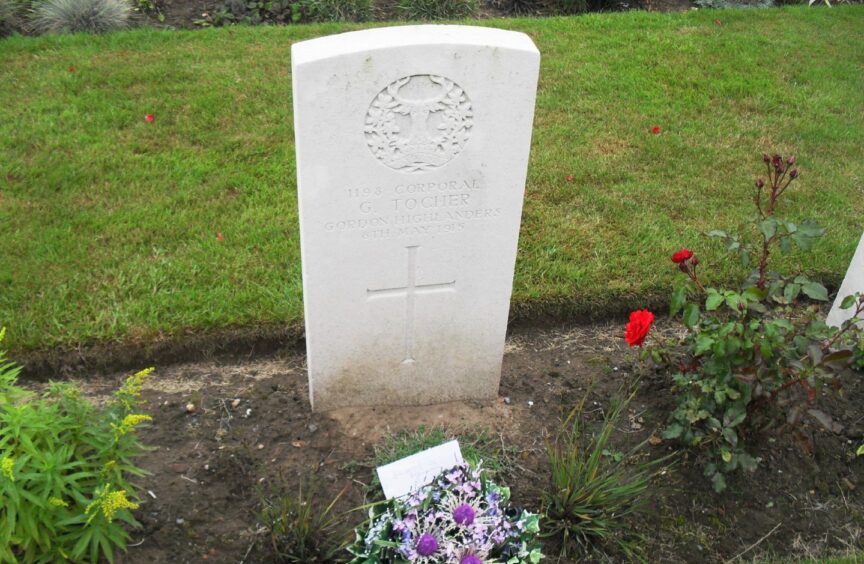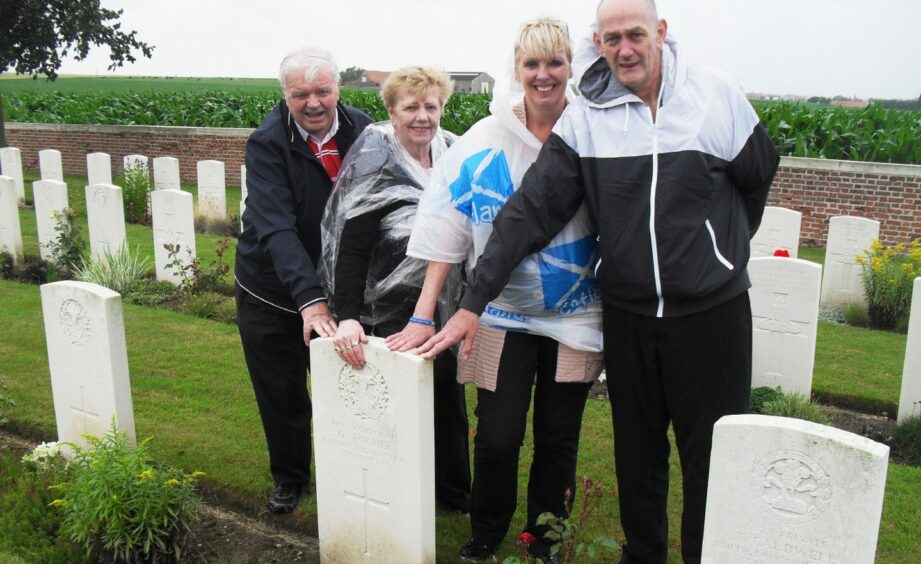The great niece of a tragic band of brothers who died in the killing fields of World War One vowed to “never forget” as she made a moving pilgrimage to their Aberdeen graveside.
Hazel Greig is a descendant of five brave brothers from the Tocher family who gave their lives, one of the biggest losses suffered by any Scottish family.
Health support worker Hazel helped erect a tribute to the brave brothers after one of them was left in a pauper’s grave in Aberdeen.
She backed the P&J’s Remembrance project – a digital database commemorating the fallen across Aberdeen and the north-east.
Hazel, 63, from Bucksburn, Aberdeen, said: “We should never forget. Everyone has to learn about what happened and remember the sacrifices that were made.
“These men and women fought for us so that we could live on in freedom. We just can’t understand what it was like to be there.
“It was horrendous. The family wanted to get a stone to mark the sacrifice of all the brothers and the family’s loss.
“We go there at least once a year to pay our respects.”
The Tocher brothers
A number of Scottish families lost four sons during the Great War but it is believed the Tochers made the greatest sacrifice, losing five.
The Tocher brothers served with the Gordon Highlanders. Four died in France and Belgium and the fifth died in 1923 from TB, which he contracted at a prisoner-of-war (POW) camp in Germany.
Their dad Peter, who was then in his 50s, was so devastated by their loss that he tried to get to the frontline to avenge their deaths.
In 1916, military authorities stopped him from getting to the trenches after he enlisted as the family had suffered enough losses.
George, 20, was killed in the Battle of Menin Road near Ypres in 1915 and Robert, 34, John, 25, and James, 19, all died at the Somme in 1916.
Their brother Peter was captured at Le Cateau in 1914 and spent years in a PoW camp before returning to Scotland, where he later died.
George is buried in La Clytte Cemetery in Belgium and Robert lies in Forceville Cemetery in northern France.
‘The loss must have been unimaginable’
The bodies of John and James were never found and their names appear alongside thousands of others on the Memorial to the Missing in Thiepval, France.
Hazel said: “The loss must have been unimaginable. It is difficult to get your head around it.
“A human tragedy. The family’s loss would have been horrendous. The boys were obviously brave and we are proud of them all.”
In 2014, Hazel and her family laid a wreath on George’s grave in Ypres.
Having lost more sons than any other Scot in the Great War, the boys’ dad Peter was given the honour of placing the Aberdeen Memorial Roll within the casket on the shrine of the Memorial Court in 1925.
Not much is known about how Peter managed to enlist in the Army or how the military discovered his plan.
After the war, Peter and Elspeth, who also had three daughters and another son, who died in infancy, were hit by tragedy yet again when their eldest son died in Aberdeen’s City Hospital in 1923 after spending most of the war as a Prisoner of War.
His death came two years after the official end of World War One and meant he was not entitled to a Commonwealth War Graves Commission headstone.
At the time, his family could not afford a proper burial so Peter was placed in a pauper’s grave in Aberdeen’s Trinity Cemetery.
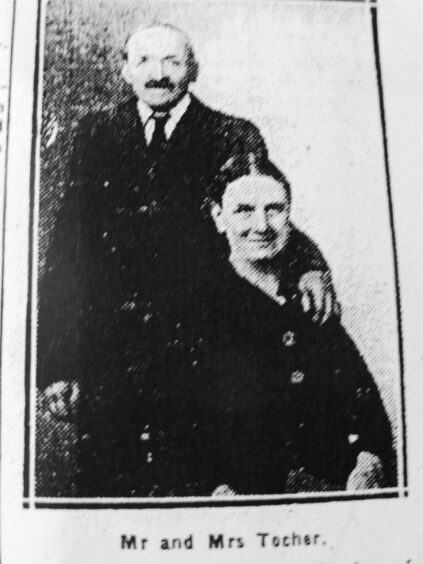
He eventually got a fitting memorial two years ago when Hazel and her family saw to it that a headstone was erected in Trinity Cemetery commemorating all of the tragic Tocher boys.
She said: “The family worded it so that the stone is a tribute to all the boys. We wanted all of them to be remembered.
“We will always remember them.”
